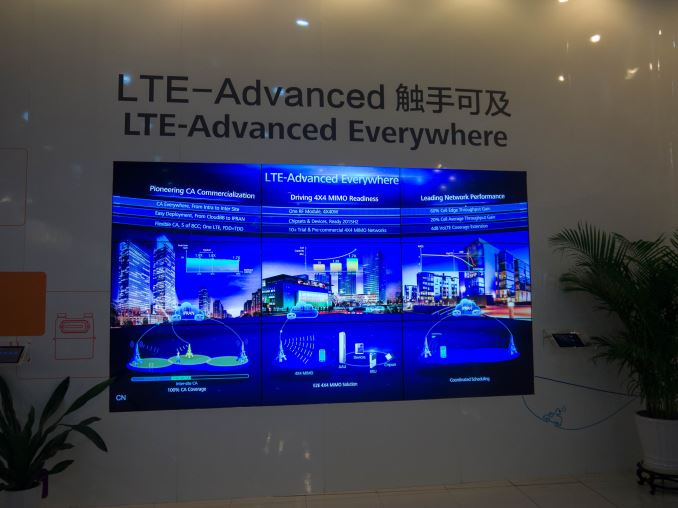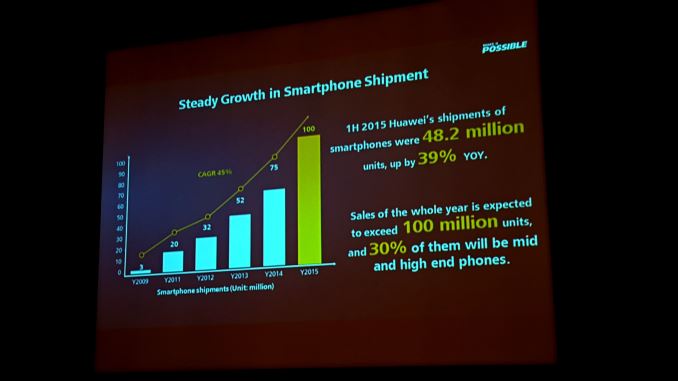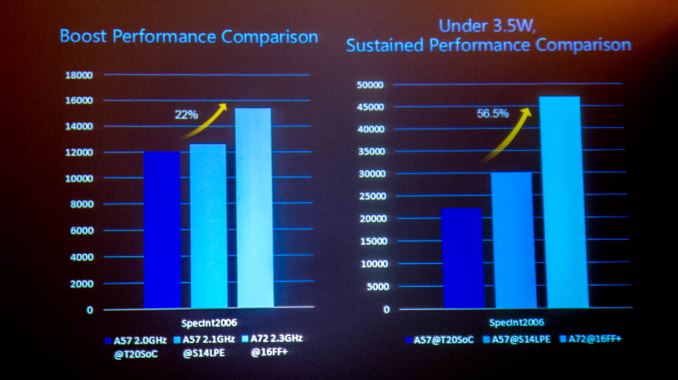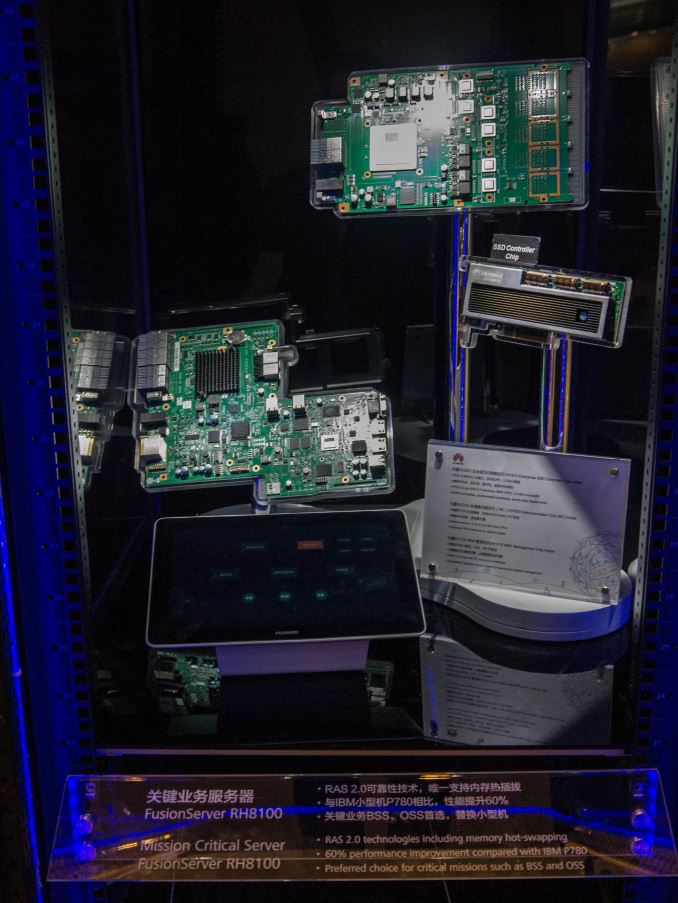China Calling: Huawei’s Media Tour, Kirin 950 and Why We Went
by Ian Cutress on December 4, 2015 8:00 AM ESTFinal Thoughts
All truth be told, when an electronics manufacturer opens up we stand to gain a great deal of insight into how they think and how strategies formulate. Sure, it’s a question of speaking directly to the people that actually make the decisions, otherwise questions and answers never go through the chain. But also as an editor, from my perspective, it is important to understand when you are presented with a standard PR answer and ask the right questions sufficiently in order to get to the heart of what makes a company tick. There will always be things that a company will never tell you, either due to liability or the level of trust they have with you, or there might be some discussions that remain strictly behind closed doors.
As we tell every company we meet, those closed room discussions, despite not directly producing content for us as technical media or analysts, are just as valuable as on-record meetings and can actually be really helpful in understanding perspective or technical details. Even if we do not write about what is said, it enables another layer of conscious or sub-conscious consideration and analysis about the industry for when we write about other topics, helping us translate what we see into the wider picture. Understanding why from a bottom-up perspective is just as important as the top-down, even more-so when looking at trends and directions and being able to educate users and engineers alike.
In that regard, this trip has established a new level of dialogue between Huawei and AnandTech in order for both sides to understand each other more, from our understanding of the markets and devices to their diverse silicon and product portfolio. That rapport and direct line of communication to those who turn the cogs which we did not have before is important, with respect to handsets, silicon, and wider corporate strategy. It is clear that Huawei wants to expand into more markets beyond their standard Chinese base, and has dipped its toe into leading the market with TSMC’s 16nm FinFET+ node in the Kirin 950. The phrase ‘premium brand’ was a common theme throughout our trip, and the numbers back that up. Moving from 3 million handsets in 2009 to 48.6 million in the first six months of 2015 alone means that the investors are all happy, especially given that 30% of those are high-to-mid level devices at a cost of €400 and up. Being partially vertically integrated through its HiSilicon subsidiary allows it to reduce cost, spend on R&D and provide a custom product as long as it is well executed. While this is going on, Huawei’s two other business groups on services and infrastructure account for the other 60% of the company, which are also both benefiting from the HiSilicon synergy.
Huawei does still have several mountains to climb however, this much is obvious. When speaking purely about the handset business, when striving for that premium brand status, its presence in North America is still a way behind the two major players. This stems from several factors including a CDMA licensing and certification issue preventing Kirin chipsets in North American models, but also an issue regarding the perception of some users that will not want to hand over money for a device made by a Chinese-based data company, especially if they cannot pronounce the name. Arguably the first of those issues is easier to crack about CDMA, such that one solution to Kirin might be to produce a die without an integrated modem, similar to Apple, but both of the issues above will have severe implications on Huawei’s ability to expand in the US. The Huawei watch too, as a dip into the wearable space, comes with many variables on style, size, applicability, usefulness, ecosystem, and others – sometimes a single model can be deceptive when users have more unique tastes and perhaps want something more/less than a classic watch design.
For the rest of the world where CDMA isn’t a factor, the latest Kirin 950 chipset needs to be a proven entity and tackle the big players in Apple’s A9, Qualcomm’s upcoming Snapdragon 820, Samsung’s Exynos 8890 as well as other upcoming custom designs. Samsung is the only member in that list with their own fabs, meaning the others will have to pay top dollar for a lead in semiconductor manufacturing. Beyond that the quality of the designs for performance, power efficiency, custom IP blocks and software integration will also be up against back-end production of the silicon itself. It comes across as a fairly daunting task for one of these manufacturers to get all the pieces in place for a new flagship handset every year that builds on the last. In order to be successful they have to execute well in every area every year, to which we’ve already seen some failures and successes.
Both Andrei and I were quietly surprised with the Kirin 950 announcement, and felt positive for the 950 as it offers some interesting innovations (first smartphone A72 cores, first hybrid memory controller, new custom image signal processor, low power i5 sensor hub with compute capabilities in an ARM Cortex M7). It will be interesting to see how much we can decipher about the new chip compared to the old, especially when we have new cores (A53/A57 to A72), a new process node (28nm to 16FF+) , new custom IP and so on. When we get a device into test, teardown and produce numbers, they will tell the story. But as is obvious from our trip that smartphones are just the tip of the iceberg for Huawei.














109 Comments
View All Comments
s.yu - Sunday, December 6, 2015 - link
Why you certainly hold yourself to high standards! If you have $1000, you could try to get dirty rich with it, or you could try to fulfill some proper dream and make yourself some money in the progress. Their business practices make it very clear that they're preying off the ignorance of the masses, and they try very little to conceal it. That's why it's repulsive.buhusky - Friday, December 4, 2015 - link
Did you bring a burner phone and laptop with you?tipoo - Friday, December 4, 2015 - link
I agree with this entirely -"My argument was slightly different, especially if we compare to the industries I regularly write about; from my perspective, I’d prefer to test the popular devices. With a $600 smartphone, everyone has an opinion on the design, the hardware, the benchmark results, or simply fanboyism, but not everyone has $600 to spend. While a lot of users might discuss the virtues online, or debate over small details, the reality is that a good portion will opt for something around the $250-$300 range for their main device or family devices, depending on contract, region, availability and other features. This is similar to when we get $2000 laptops, or $500 motherboards – lots of discussion, but in reality fewer people will buy them and go for the $800 2-in-1s or sub-$160 motherboards."
Budget-mid range laptop and smartphone reviews are just as interesting to me as the flagships.
Communism - Saturday, December 5, 2015 - link
Indeed. Spending 600 USD on a phone made up of ~100-120 USD worth of essentially commodity parts is a reflection of the complete lack of consumer awareness or care for anything and everything other than fashion.Fashion being a primary concern of consumers is incompatible with capitalism as the only regulatory mechanism in capitalism is the consumer's purchase of the product (Homo economicus).
V900 - Saturday, December 5, 2015 - link
That is literally one of the dumbest things I read in the comments here for a very long time...The price of the materials and wool in a high quality, custom fit 400$ suit is also around 20$...
Because guess what, there are many other factors involved in the retail price of something, than the price of the components involved.
Even Apple, who have the highest margins in the business only makes about 200$ on a 6-700$ phone, which goes to show how meaningless BoM guesstimates of the price of components are...
s.yu - Saturday, December 5, 2015 - link
One-up that.Daniel Egger - Friday, December 4, 2015 - link
Interesting read but actually more due the information what you (and potentially whole leading countries on this planet) do not know about Huawei than some new facts.Amandtec - Friday, December 4, 2015 - link
I was believing everything until you said the VP's name is Bruce Lee. April fools. Ha ha. You got me.davegraham - Friday, December 4, 2015 - link
did they mention their founder's ties to the PLA at all? I'm curious since that seems to be fudded around a bit and was one of the primary reasons why Huawei has had almost no penetration in the US MSP, Gov't, and other (I2, ES2, etc.) backbone space. Honestly asking, not trying to fluff.name99 - Friday, December 4, 2015 - link
"Throughout all of this, it becomes clear that there is a white elephant in the room."Mixed metaphors. You can have a "white elephant" (a pointless project pursued for the sake of vanity and showing off) or "an elephant in the room" (an obvious point that everyone is aware of, but everyone is also embarrassed to bring up) but it's extremely rare that you want both in the same sentence and certainly not (yet) in this case. (IF Huawei's push into the US is very expensive and very unproductive, and becomes generally known as such, then in five years or so the sentence WOULD work and would be witty --- but not yet.)
At least you didn't also mix blind men and elephants, or pink elephants, into the sentence!